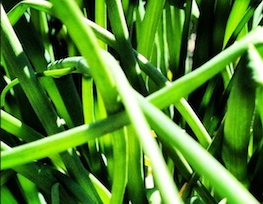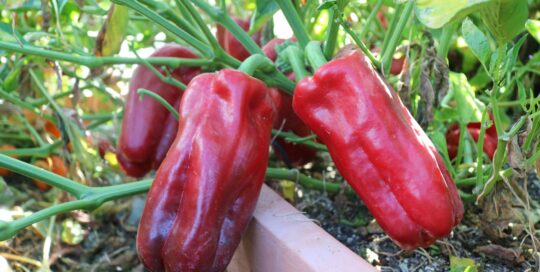Growing Chives, and What to Do With Them
Views: 6048

My usual quip is that rocks and stones are my first crops of spring. There’s something about the freezing and thawing of soil, I suppose, that nudge them to the soil’s surface.
Not this year, for two reasons. First, our community garden added 4 to 6 inches of loam to each plot in late March. And the other reason—again, a guess—there really wasn’t much freezing and thawing going on throughout the winter.
So, this spring’s first crop is chives. This oniony character has been in my plot since the beginning, as a holdover from the previous tenant. I never really do much with them, except harvest a few now and then. Mainly I keep them in the garden because I do adore their fuzzy purple flowers that appear in mid spring. They are a bit Dr. Seuss-ish to me, and I like that.
Growing is Easy
If I don’t harvest them often and they weren’t mine to begin with, why do I keep them? Because, chives are one of the first green things to emerge in spring and they are carefree.
I have never intentionally watered or fertilized my chives.
I’ve never had to worry about pests or diseases.
These onion relatives keep on kicking, no matter the state of the rest of my garden.
Prior to the addition of the half-foot of loam, I strolled through the garden to see what was emerging along with the early-spring warmth. Two mounds of chives were well on their way, already up a good 3 inches or so.
I removed them and replanted in a space in the garden that would be protected from the soily onslaught. Even without a dose of water when replanting, both clumps of chives survived quite well.
How to Use Chives
Chives are hardy. You’ll eventually wonder what to do with them all. Here are a few suggestions:
Divide. Don’t be afraid to divide the chives. Dig up the clump as I did in early spring. Replant half and give the rest to someone who might want some. Or, throw it on the compost pile.
Pot Chives. Pot some in a smaller container to place conveniently on your kitchen window.
Cook with them. I’ve heard you can harvest the smaller bulbs in the clump and cook with them. I haven’t tried that, but sounds like a good idea.
Repot or Replant. In the fall, dig up a small clump and either bring it indoors as a potted herb plant or replant into a cold frame for continued harvest through winter.
Eat them! Snip them into a salad, on top of a baked potato or potato soup, and into scrambled eggs; bake them into chive and cheddar scones; fry them into chive chips; use them in butters, vinaigrettes, and infused vinegars.
There’s a ton you can do with chives. The important thing is to not be overwhelmed into inaction. Pick one and run with it.
Meet Ellen Wells
When you’re raised on a farm, you can’t help but know a thing or two about gardening. Ellen Wells is our expert on edible gardening.…
Ellen's Recent Posts

Pepper Red Impact an All-America Selections Winner






